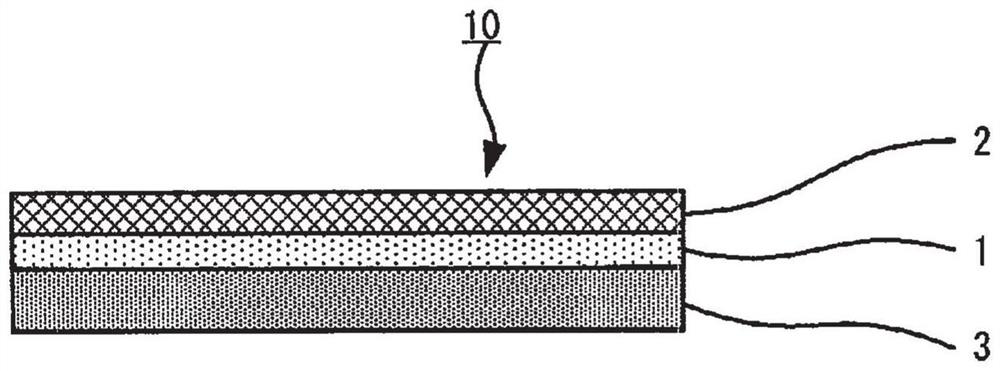Manufacturing method of electrode for solid state battery
A solid battery and manufacturing method technology, applied in the direction of electrode manufacturing, battery electrode, electrolyte battery manufacturing, etc., can solve the problems of battery temperature rise, battery adverse effects, etc., and achieve the effect of reducing electronic resistance
- Summary
- Abstract
- Description
- Claims
- Application Information
AI Technical Summary
Problems solved by technology
Method used
Image
Examples
no. 1 approach
[0080] like figure 2 As shown, the first embodiment of the manufacturing method of the present disclosure is provided with at least two pressing steps: pressing step A1 of pressing the current collector with the PTC resistor layer formed thereon; and pressing the electrode active material having at least the electrode active material layer Pressing process B in which the component is pressed.
[0081] 2-1. The process of forming the PTC resistor body layer
[0082] In the step of forming the PTC resistor body layer of the first embodiment, the PTC resistor body layer is formed by coating the slurry containing the conductive material and the polymer on at least any surface of the current collector, followed by drying.
[0083] (1) Slurry
[0084] The paste contains a conductive material and a polymer.
[0085] The method for forming the PTC resistor body layer after applying the slurry on the current collector is not particularly limited, but generally, the conductive mater...
no. 2 approach
[0127] like image 3 As shown, the second embodiment of the manufacturing method of the present disclosure is provided with at least two pressing steps: pressing step B of pressing the electrode active material member having at least the electrode active material layer 3 in such a manner that the maximum pressure is b; and The electrode precursor having at least the current collector 2 , the electrode active material layer 3 and the PTC resistor layer 1 is subjected to a pressing step A2 of pressing so that the maximum pressure is a2 .
[0128] The first embodiment and the second embodiment are common in the following aspects: the aspect of having at least two pressing steps; the aspect of having the pressing step B of pressing at least the electrode active material member having the electrode active material layer; The aspect in which the maximum pressure b1 applied to the electrode active material layer is greater than the maximum pressure (a1 and a2) applied to the PTC resi...
Embodiment 1
[0153] (1-1) Step of Forming PTC Resistor Layer
[0154] Furnace black with an average primary particle size of 66 nm (manufactured by Tokai Carbon Co., Ltd.) as a conductive material, alumina as an insulating inorganic substance (particle size D90: 6 μm), and PVDF as a polymer (Kureha Co., Ltd.) were prepared Manufacture of KF Polymer L#9130). These were mixed with N-methylpyrrolidone as a solvent so as to have a volume ratio of furnace black:PVDF:alumina=10:30:60 to prepare a slurry. Then, the slurry was applied on an aluminum foil having a thickness of 15 μm, and dried in a stationary drying furnace under the conditions of 100° C. and 1 hour to form a PTC resistor layer.
[0155] (1-2) Pressing process A1
[0156] The current collector on which the PTC resistor layer was formed was rolled under the conditions of a pressing pressure a1 of 5.6 kN / cm (199 MPa in conversion) and room temperature to obtain a PTC resistor layer-current collector laminate.
[0157] (1-3) Pressing...
PUM
| Property | Measurement | Unit |
|---|---|---|
| thickness | aaaaa | aaaaa |
Abstract
Description
Claims
Application Information
 Login to View More
Login to View More - R&D
- Intellectual Property
- Life Sciences
- Materials
- Tech Scout
- Unparalleled Data Quality
- Higher Quality Content
- 60% Fewer Hallucinations
Browse by: Latest US Patents, China's latest patents, Technical Efficacy Thesaurus, Application Domain, Technology Topic, Popular Technical Reports.
© 2025 PatSnap. All rights reserved.Legal|Privacy policy|Modern Slavery Act Transparency Statement|Sitemap|About US| Contact US: help@patsnap.com



